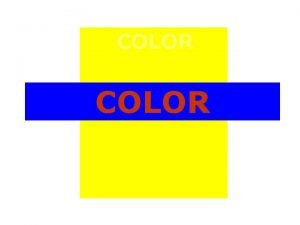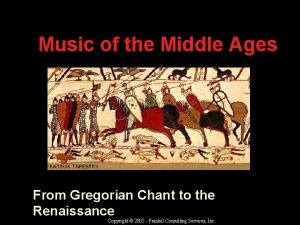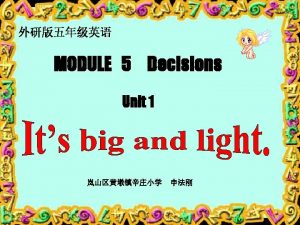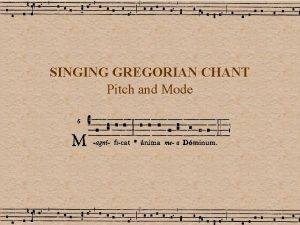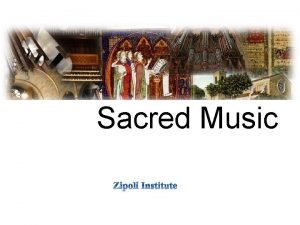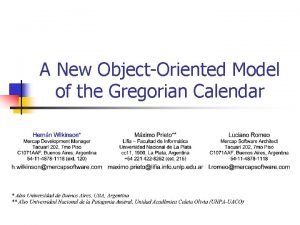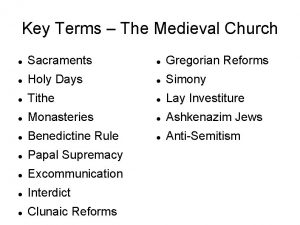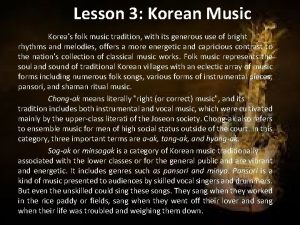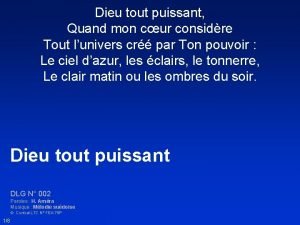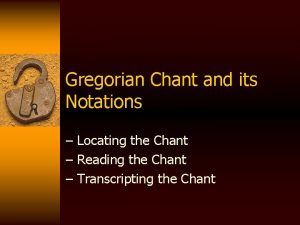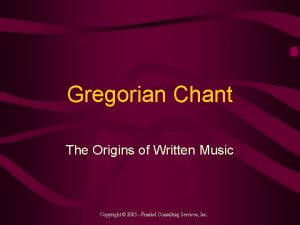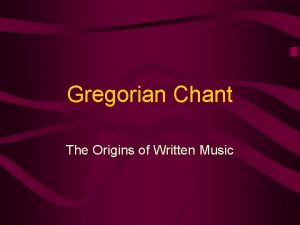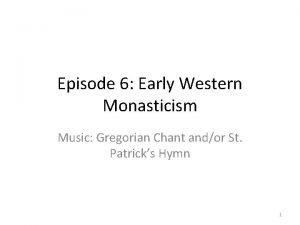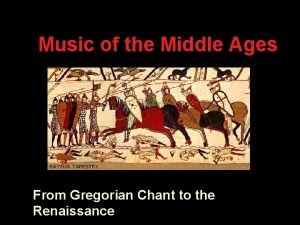MEDIEVAL MUSIC VXV 1 Religious music Gregorian chant











- Slides: 11

MEDIEVAL MUSIC (V-XV) 1. Religious music Gregorian chant: is a form of monophonic religious music. It has: - Religious text written in Latin Monophonic texture There isn´t a beat Vocal music without instruments Anonymous composers

2. Secular music - Troubadours and trouveres. They were poets and minstrels. These artist converted storytelling into an art, and often entertained huge crowds at fairs, weddings and other celebrations. They used instruments. - Jongleurs. They were professional singers who performed these compositions from town to town. 3. Composers The most important composers were Leonin and Perotin (Notre Dame school)

RENAISSANCE (XV-XVI) 1. Religious music There are three principal liturgical forms: • Mass (Europe ) • Choral (Germany- Lutero) • Anthem (England – Calvino)

2. Secular music • Vocal music. Principal secular vocal genres are: - Madrigal (Italy) The number of voices varies from two to eight. It´s written in italian and lyrics are about love. - Villancico (Spain) Voices varies from three to four, with strophe and chorus. Lyrics are about different subjects.

• Instrumental music - Dances (basse danse, pavane, galiard, Saltarelo, allemande, courante, …) The first ensembles of instruments appeared in the Renaissance period. Normally, they were grouped by family or intensity. The main instruments are: vihuela (spanish), viol, lute, sackbut, cornet, recorder or harpsichord.

3. Composers The most important composers were: PALESTRINA - Palestrina - Tomás luis de Victoria - Juan del Encina.

BAROQUE (XVII-XVIII ) 1600 -1750 1. Characteristics -Basso continuo. It was an ensemble of instruments that provided the harmonic structure of the music. (Harpsichord or organ, and cello, double bass or viola da gamba) - Contrast and movement. It´s the most important characteristic. There were contrast between instrumental and vocal groups, different timbres or tempos. The concertato style involves contrast between opposing groups of voices and groups of instruments. - Affections. Composers tried to express the affections: rage, heroism, sorrow, or joy.

2. Religious music - Oratorio: like an opera, without performance. - Passion: is an oratorio about the suffering of Jesus leading up the Crucifixion. - Cantata: It contains more than one movement.

3. Secular music • Vocal music. Opera is an art form in which singers and musicians perform a dramatic work combining text (called a libretto) and musical score. It incorporates acting, scenery, costumes and, sometimes, dance. The first important opera was The Orfeo of Monteverdi.

• Instrumental music. - Concerto grosso: the musical material is passed between a small group of soloist (the concertino) and full orchestra (the ripieno) Concerto a solo: There is just one soloist and orchestra. - Suite. It is a set of dances (courante, zarabande, allemande, …) preceded by a prelude or overture.

4. Composers - Claudio Monteverdi. (Opera) - Georg Friedrich Haendel (religious vocal music) - Johann Sebastian Bach (religious and instrumental music) - Arcangelo Corelli (concerto) HAENDEL BACH
